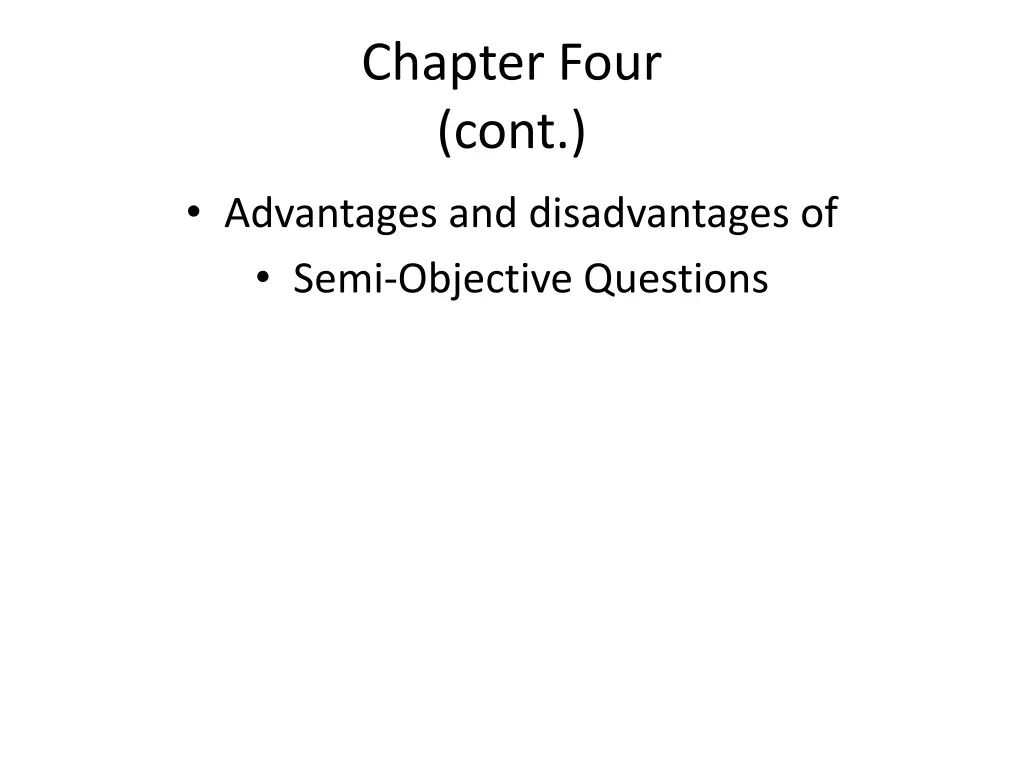
Advantages and Disadvantages of Semi-Objective Questions in Education
Exploring the benefits and drawbacks of semi-objective questions in educational assessment, including quick construction, limited scoring time, and increased subject coverage. Techniques such as transformation and short-answer questions are used. However, challenges include longer scoring time and potential for multiple correct answers. Not suitable for literary appreciation.
Download Presentation

Please find below an Image/Link to download the presentation.
The content on the website is provided AS IS for your information and personal use only. It may not be sold, licensed, or shared on other websites without obtaining consent from the author. If you encounter any issues during the download, it is possible that the publisher has removed the file from their server.
You are allowed to download the files provided on this website for personal or commercial use, subject to the condition that they are used lawfully. All files are the property of their respective owners.
The content on the website is provided AS IS for your information and personal use only. It may not be sold, licensed, or shared on other websites without obtaining consent from the author.
E N D
Presentation Transcript
Chapter Four (cont.) Advantages and disadvantages of Semi-Objective Questions
Advantages: 1. The questions are quick and easy to write. 2. They are less time consuming to construct than multiple choice items. 3. they require much less scoring time than would a composition. 4. They embrace a greater subject area than a composition question.
Advantages: (cont.) 5. They demand a certain amount of coherence in the answer. 6. They require more than just recognition and recall. 7. The opportunity for guessing is much less than that of a multiple-choice item. 8. The relatively high objectivity of marking makes this test reliable.
Disadvantages: 1. They take longer to score than objective tests. 2. Quite frequently there are a number of possible right answers, some of which might not have been considered by the examiner when preparing the test. 3. They are not suitable for certain answers such as answers to questions on literary appreciation.
Techniques Used: Techniques used in semi-objective questions include: 1. Transformation 2. Completion 3. Cloze Test 4. Short-answer Questions

